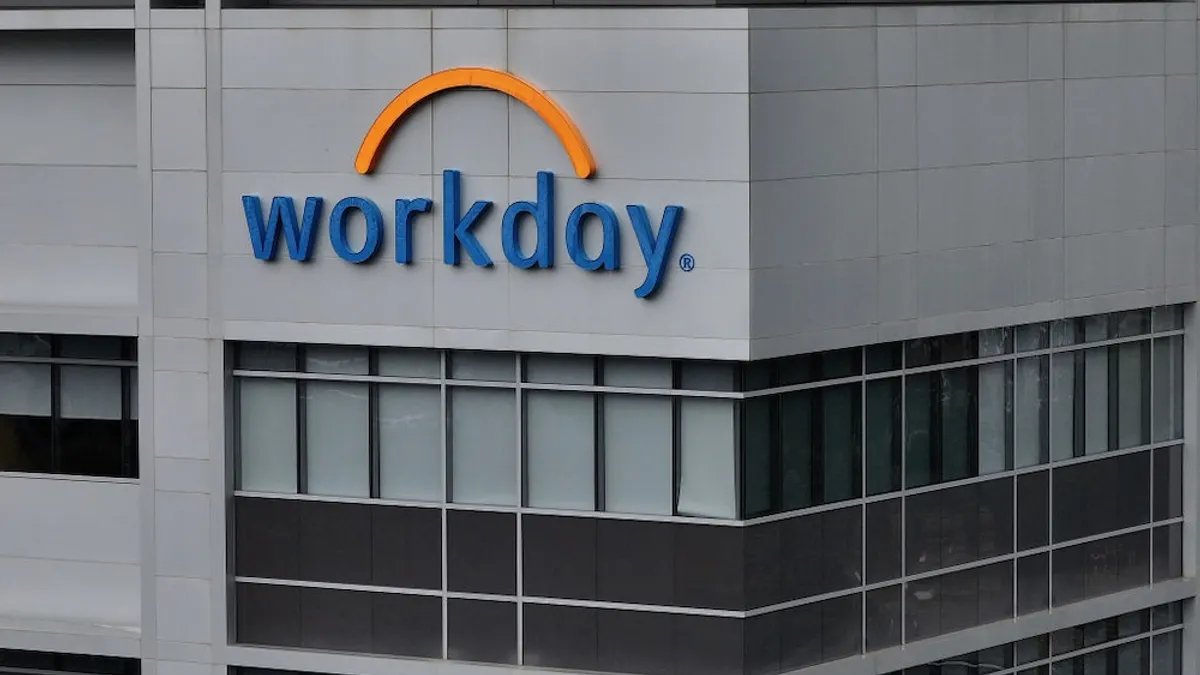These days, the HR function has broken out of its administrative silo, looking more like a strategic business partner than a functionary support system. But HR has picked up an affinity for one department in particular: marketing.
From recruiting candidates in a hot labor market to educating employees on their benefits, HR managers have leaned into marketing the well-cited employee experience with increasing sophistication — so much so that branding can even be considered an HR function, both internally and externally.
"The last decade or so, the fact is that much of HR's work has evolved to look a lot like marketing," Jim Hoff, senior partner on the Aon Strategic Advisory Communication team, told HR Dive. "Employers look at this like trying to build employment experiences, rather than just getting people in and out."
But what changed? Why is this happening now now? At least one key tech innovation may be to blame: the internet.
"There's the overarching concept that, because of the internet, people are in charge of media," Steve Day, founder and creative director of ideaMACHINE Studio, told HR Dive. And as media has become more human, companies have also had to change their tune to better accommodate the new normal.
The power of the brand (is limited)
Talent is increasingly attracted to organizations with "terrific corporate brands," Hoff said — brands that deliver strong customer experiences or are well-known in the wider cultural consciousness. But a big difference between the HR of now and the HR of yesteryear is that employees are more acutely aware of when their experience as a customer does not match up with their experience as an employee, he added.
"It's harder to cover up what's actually happening inside a company," Dan Sirk, chief marketing officer at Kununu, told HR Dive. "What's really interesting about that ... is the reality is having the internal and external reflection align is ultimately in the best interest of both sides."
If an applicant is being sold on something that aligns with their cultural expectations — be it through a strong customer experience or a solid interview — but experience the opposite when they come on board, that person will likely leave quickly. A company that has invested effort in revealing the true working experience at a company will ultimately have a better and happier workforce, Sirk said.
Millennials and younger employees are particularly aware of the difference between external brand and internal experience, and have "articulated that demand" for the experience to equalize, Hoff said. Part of that has to do with how younger workers have "grown up" on experiences — and on how to tell the world about something through a digital lens.
Tech (and the internet) has been changing the game
The old adage is that HR is 10 years behind customer engagement as far as technology goes, but that gap is closing quickly.
"I've been looking at this for two decades now, and HR and benefits were quite a bit behind in the adoption of tech or new techniques, and I have seen that shrink pretty significantly in the last few years," Hoff said.
HR is even finding use for tools once explicitly meant for the realm of marketing, such as online videos that can be accessed anywhere at any time (and are nothing like the '80s training videos of yore).
"The marketing team had the airwaves," Day said. "Now HR has the same airwaves because it's the internet." Mobile-accessible video, for example, can allow HR managers access to engagement data and analytics that old-fashioned videos played on company TVs couldn't provide, like watch time metrics. And they're also easier to share.
"It's a lot easier for employees to be that brand ambassador," Hoff said. Employees have multiple channels for accessing information and sharing it thanks to their mobile phones — and it's only the beginning of "mobile-geddon" in that regard, Day said. Getting ahead of the curve and encouraging employees to participate, rather than waiting for a potential catastrophe, is key.
HR and marketing as departments combining powers
Due to that ease, HR and marketing are increasingly pressed to join forces, either by borrowing each others' tactics or by, in some cases, quite literally bringing the two together.
Candidate pools, for example, are a concept straight from marketing 101, Sirk said. Getting people interested in the company and then delivering to that database of interested individuals is a simple concept but one that's become critical to HR success, especially as recruitment technology improves overall.
But such efforts have butted against a somewhat difficult fact: many HR practitioners simply aren't educated on marketing or what it entails — and the marketing department has its own concerns. They don't really have the time to care about the HR side so much, Sirk said.
"So companies have to carve out a function to focus on it," he said, "either in marketing or in HR to make it happen."
A "recruitment marketing" department that focuses specifically on social media, review site management and the like may combine the forces of HR managers and marketing associates to take advantage of the expertise of both.
"Both departments have grown to realize that they have a strategic place in the growth of the business," Hoff said.
A caveat: Internal and external brands can't always match
While many companies would benefit from a unification of their internal and external branding, sometimes a company needs to communicate the key difference between the two, Sirk said.
For example, a company that brands itself purposefully as a dependable, "big machinery" company may not be able to use that exact image to obtain the tech people needed for up and coming projects at that company. In that case, a difference in message between employees and customers may be necessary.
"What they need to do is establish perceptions in the user base, but on the employer side say 'we are a tech company making major breakthroughs year after year and improving the lives of millions,'" Sirk said.
And this issue of image gap does not even touch on other moving parts in recruitment, like locale or the state of competition. Recruitment is keen to only get more complex in that regard.
A more human business world
In a post-#MeToo world, employers have even seen value in approaching sensitive but important HR issues in a more public-facing way.
In December, Facebook publicly shared its own harassment policy in a bid to push transparency in the tech industry — an industry that had suffered particularly from sexual harassment allegations in the surrounding months. We could see more companies making such moves, Hoff speculated, especially as brand equity becomes so tightly tied to how a company behaves in a public sphere.
"These things are so intertwined now that … having a strong policy and enforcing it is part of your trust with your customers and employees," he said. "People want to go to employers that are responsible."
As for how that would look on a broader scale, so far there is no "completely proven playbook" on the matter, Hoff added. But an organization that has built up solid brand equity and trust will likely see success with both customers and employees and thus be more resilient in the face of crises.




















